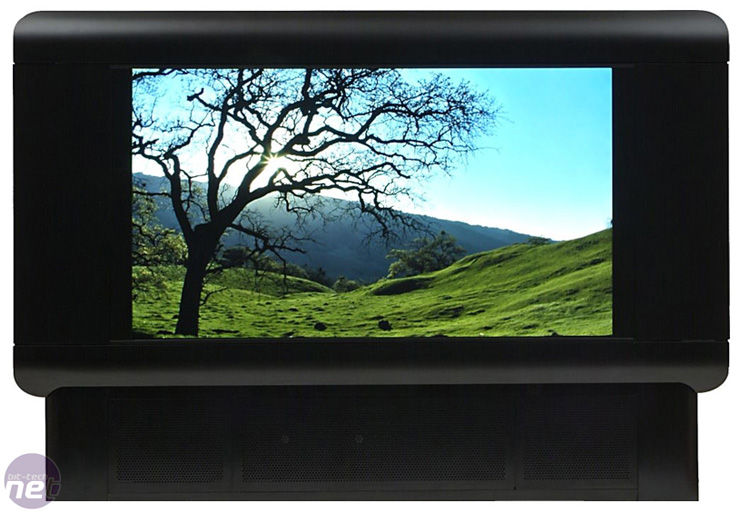
BrightSide DR37-P EDR display
BrightSide have coined the term Extreme Dynamic Range to describe their new technology: it goes beyond mere High Dynamic Range, into the EXTREME. But what does that mean exactly?Do you remember the first time you saw a High Definition (HD) video? Colours so vivid; detail so crisp; a picture so sharp that it literally made your brain hurt? Well, believe it or not, when you take a perfectly decent LCD HDTV and place it next to BrightSide's HDR display, the latter raises the bar so significantly in terms of clarity and image quality that you'd swear the first display was standard definition. In short, HDR to HDTV easily matches the difference that HDTV makes over SDTV.

Here it is, the BrightSide DR37-P: the world's first High Dynamic Range display. BrightSide claim they can achieve such startling results by simultaneously producing blacks 10x darker as well as whites 10x brighter than conventional displays. In fact, their unique back light technology is so bright that it is water-cooled, sporting not one but two 120x240mm radiators similar to a Black Ice Xtreme II.
Don't panic: the model shown here is the first generation, low-volume production version. BrightSide are licensing the technology to major display manufacturers, and hope to reduce heat, noise and power consumption by the time it hits mass production.
If you look past these early engineering issues, in side-by-side testing, it makes the best we've currently got look rubbish in comparison. Let's consider the specifications for a minute:

Although the contrast ratio is seen as a key indicator to the performance of a display, it is really only on paper. The reason for this is the way it is calculated:

The Westinghouse HDTV may have rubbish 0.55 cd/m² blacks in comparison, but with just a 1000:1 contrast ratio, it has a peak luminance of 550cd/m² - nearly double the brightness of the SED display. Confused? This next part will really bake your noodle.
The BrightSide DR37-R EDR display theoretically has an infinite contrast ratio. How? Because it can turn individual LED backlights off completely (see How It Works), it has a black luminance of zero. When you divide any brightness value by this zero black value, you get infinity. Obviously, explaining that to Joe Public in your local Dixons or Best Buy is just going to confuse them, so BrightSide has reached a compromise: by using the next value up their scale from zero luminance as their denominator, they are able to claim an effective contrast ratio of a whopping 200,000:1.
Stop for a minute to digest that number. The brightest point on the screen - 4,000 cd/m² - is 200,000 times brighter than the darkest non-zero point, at less than 0.05 cd/m². So how exactly does it work?

MSI MPG Velox 100R Chassis Review
October 14 2021 | 15:04








Want to comment? Please log in.